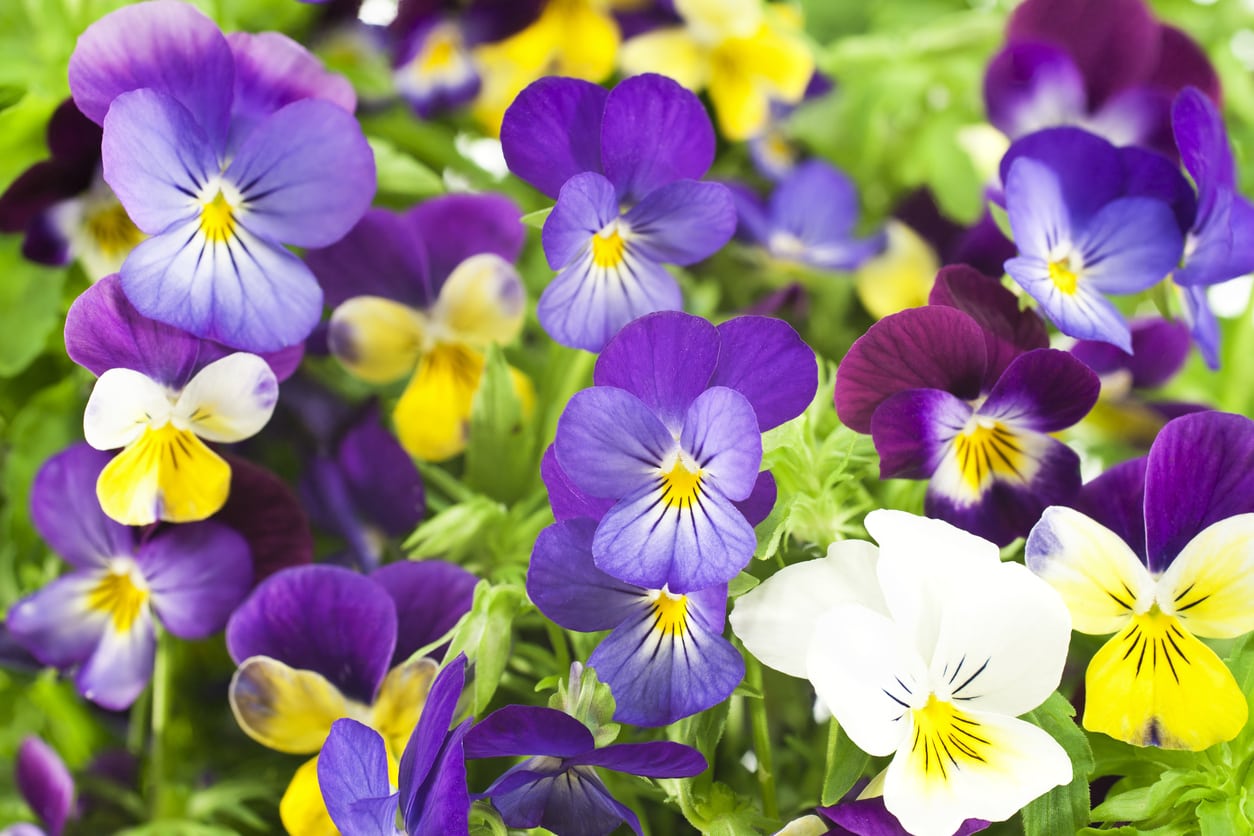No Flowers On Pansy Plants: Help, My Pansies Aren’t Blooming

Pansies are perennial favorites for many gardeners due to their prolific and lengthy bloom time and the myriad of cheerful colors available. Easy to grow, pansies are a terrific option for the novice gardener. Even so, gardeners may find that their pansies aren’t blooming. What causes no flowers on pansy plants? Read on to find out about pansies that won’t bloom and what to do when pansies are not flowering.
Help, My Pansies Aren’t Blooming!
The first thing to consider about pansies that won’t bloom is temperature. Pansies are cool weather plants that take a season to mature prior to blooming and setting seed. This means that in the northern region pansies should be planted in the fall; in warmer areas plant seedlings in the winter. Pansies stop or slow their blooming when the weather gets hot. The heat is a signal to the plant that it is time to start a new generation, so it goes into overdrive to produce seeds instead of blossoms. If the pansies are planted at the wrong time for your zone, a likely reason for the pansies not flowering is because it is either too cold or too hot for them. This is no reason to panic, however, as these little beauties are quite resilient. They may not bloom when you want them to, but they will likely produce abundantly when the weather warms or cools as needed. Another reason for no flowers on pansies is the size of their root system. Many people buy a flat of small plugs for some quick color which, of course, have little root systems. If the plants are planted when the weather is still quite cool, they may just need a little time to grow better roots before blooming.
What to do for No Flowers on Pansy
Sometimes, you can help the pansies along by providing them with a bit of fertilizer. Fertilize them every two to three weeks with a bit of liquid fertilizer to encourage root and plant growth. Phosphorus fertilizer, like bone meal, will also help promote flowering. Also, to encourage blooming, don’t be afraid to deadhead what little blooms you may have or even prune leggy parts of the plants. You may prune up to one-third of the plant to stimulate new blooms and growth. A successful flowering depends on successful planting, so be sure to plant the pansies in a well-tilled bed that is amended with compost or well-rotted manure. This will nourish the plants, but they will benefit from an extra bit of fertilizer in the form of a 5-10-5 fertilizer once in the fall and then again in the spring. To get the longest bloom time out of your pansies, plant them in an area of the garden that is out of full sun during the hottest part of the day, from noon to three p.m. Lastly, if your pansies are lacking in blooms, it might just be the end of their life cycle. Since pansies are annuals or biennials in most regions, after only one or two cycles of blooming, they’re ready to go to that big garden in the sky, or the compost pile.
Sign up for the Gardening Know How newsletter today and receive a free copy of our e-book "How to Grow Delicious Tomatoes".

Amy Grant has been gardening for 30 years and writing for 15. A professional chef and caterer, Amy's area of expertise is culinary gardening.
